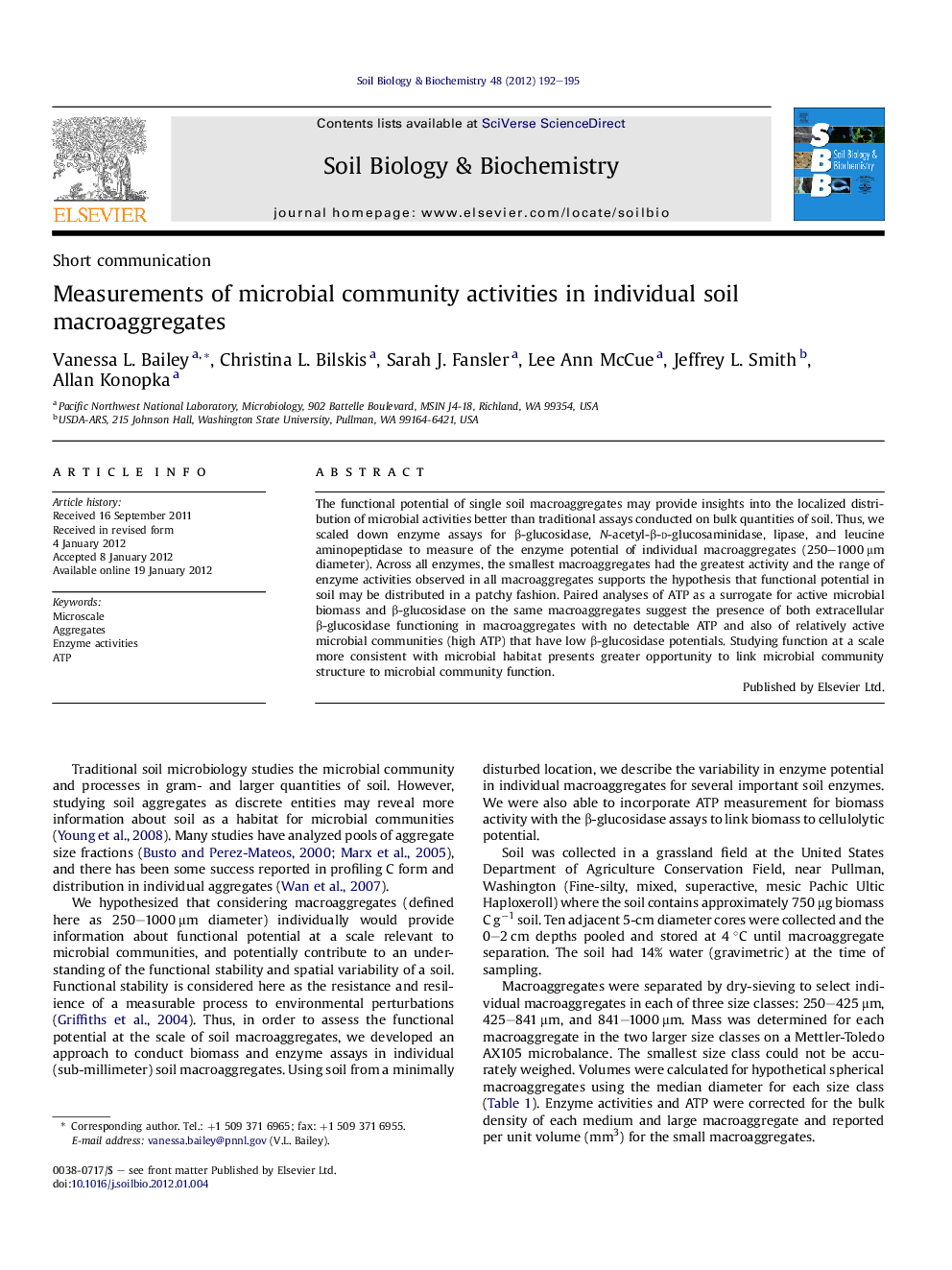| Article ID | Journal | Published Year | Pages | File Type |
|---|---|---|---|---|
| 2024949 | Soil Biology and Biochemistry | 2012 | 4 Pages |
The functional potential of single soil macroaggregates may provide insights into the localized distribution of microbial activities better than traditional assays conducted on bulk quantities of soil. Thus, we scaled down enzyme assays for β-glucosidase, N-acetyl-β-d-glucosaminidase, lipase, and leucine aminopeptidase to measure of the enzyme potential of individual macroaggregates (250–1000 μm diameter). Across all enzymes, the smallest macroaggregates had the greatest activity and the range of enzyme activities observed in all macroaggregates supports the hypothesis that functional potential in soil may be distributed in a patchy fashion. Paired analyses of ATP as a surrogate for active microbial biomass and β-glucosidase on the same macroaggregates suggest the presence of both extracellular β-glucosidase functioning in macroaggregates with no detectable ATP and also of relatively active microbial communities (high ATP) that have low β-glucosidase potentials. Studying function at a scale more consistent with microbial habitat presents greater opportunity to link microbial community structure to microbial community function.
► Four enzyme assays were adapted to single aggregates to study habitat-relevant units. ► The smallest aggregates had the greatest activity for all enzymes. ► Functional potential in soil is patchy.
